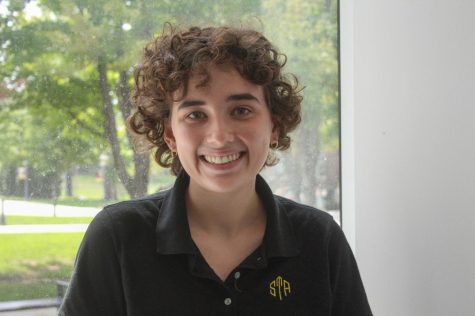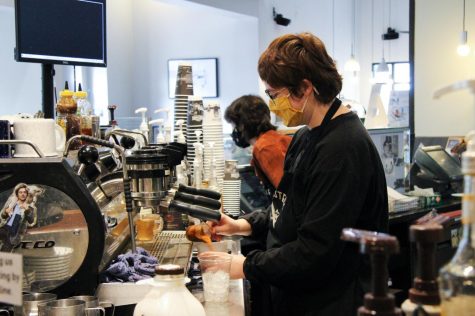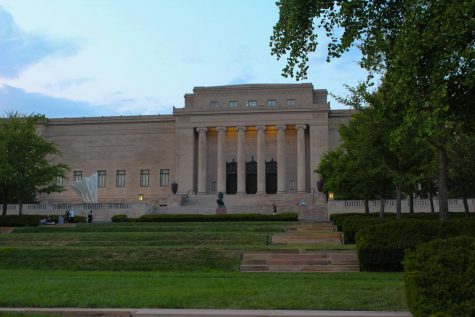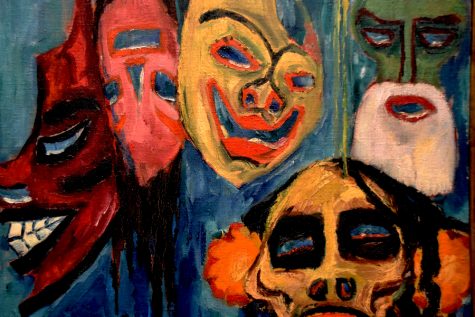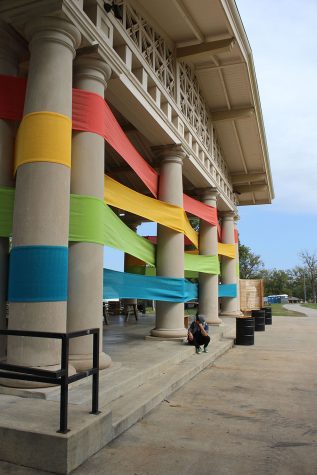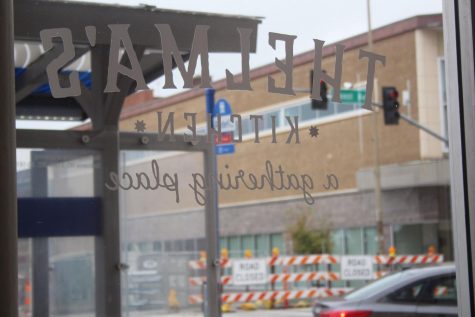Museum of Illusions: The Mirrors Behind the Mind Tricks
Starting in Croatia and advancing to North America only earlier this year, the new Union Station attraction is as scientific as it is illusive.
November 28, 2018
At the museum of illusions at Union Station, the mind tricks start outside the door. An employee will point out the “hallway illusion,” a 3D picture made up of walls and doors that move depending on the angle they’re viewed at.
Director of Operations Shane Sachs says that understanding the hallway illusion is essential to understanding the rest of the museum.
“People normally start out slow and don’t know what they’re supposed to be expecting,” Sachs says. “We make everybody see [the hallway illusion] before they walk in so it kind of gets them ready for what’s coming.”
The point of the museum may be to trick the mind, but it’s also to educate people on how the illusions work and why they appear the way they do. Every illusion is accompanied by a scientific explanation as well as a description of what you should be seeing.
“We just don’t show you what they are and how to view them,” Sachs says. “If there’s a mirror [creating the illusion] we tell you there’s a mirror, we’re not trying to hide and lie about it. We want you to understand the first perspective that you get, but if you step back you’ll see something completely different.”
Sachs originally got involved with the Museum of Illusions through a prior connection with Union Station as the operations director of Escape Rooms KC. Both projects had shared reasoning behind their location.
“We wanted something new and different,” Sachs says. “We had one of the first escape rooms which was a big hit. We would go out looking around trying to find something new and different to bring to Kansas City. With Union Station and all of their projects here like Science City, we thought it would be a great fit.”
Deciding where to put the museum was easy, but constructing it was quite the opposite. Realizing their ideas and getting them to perfection proved to be very difficult for Sachs and his business partner, Alex Doroskovs.
“It was measure twice, cut once,” Sachs says. “We were on general contractors so we didn’t have a company overseeing it. It was just us on the ground making sure these lines were done correctly, measurements were correct, and double checking everything.”
Sachs and the rest of the museum staff stay engaged with the museum visitors, especially at the beginning and end of the experience. When Sachs is at the museum, he will often stop people before they enter the museum, ask about their expectations, and then talk to them again after they’ve been through it.
“A lot of times people will see a picture or hear about it from a friend and come in,” Sachs says. “My first question is always: what are you expecting? Some of them say, ‘Oh just some pictures’ and other ones say, ‘We don’t know.’”
Sophomore Micah Quinn’s expectations before visiting the museum were very similar to those of the people that Sachs has talked to.
“Obviously, I’m expecting some wicked illusions, but I’m not sure what else,” Quinn says. “When you go into something called a museum of illusions, there’s a lot of different things that could happen. You can’t really expect anything.”
Despite being called a “museum” of illusions, the Union Station installment lacks many of the staples that make up the traditional idea of a museum. For one, pictures are encouraged if not required for certain illusions. There are no security guards watching for people getting too close to the exhibits and of course, interacting with the illusions is allowed. One of the things that stuck with Quinn the most about the museum was this difference in the environment.
“The concept was very different,” Quinn says. “Most museums are like ‘here’s this old guy who died 600 B.C.E. and here’s what he did.’ This one is more out of the box.”
One thing that all of Sachs’s projects have in common is their motivation.
“We enjoy seeing people get happy,” Sachs says. “It’s the wow factor. Sometimes we ask somebody if they saw [the illusion] and they say ‘I think so.’ If you think you saw it then you didn’t see it because you would definitely know you saw it. So then we’ll go back in and try to get people to see it and after they do, they’re like ‘I didn’t see that the first time!’ So seeing that excitement out of them is what inspires us to the next thing.”




